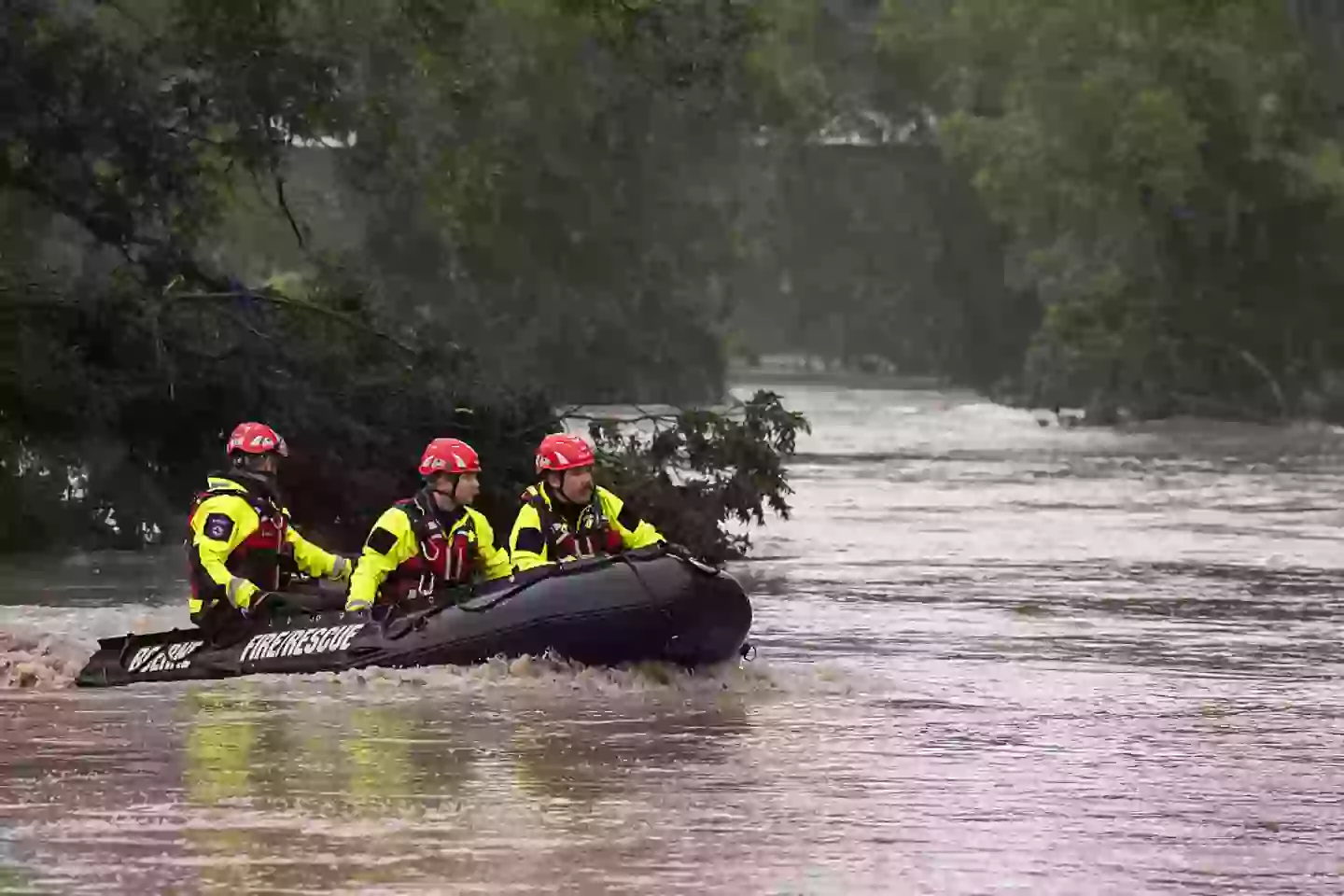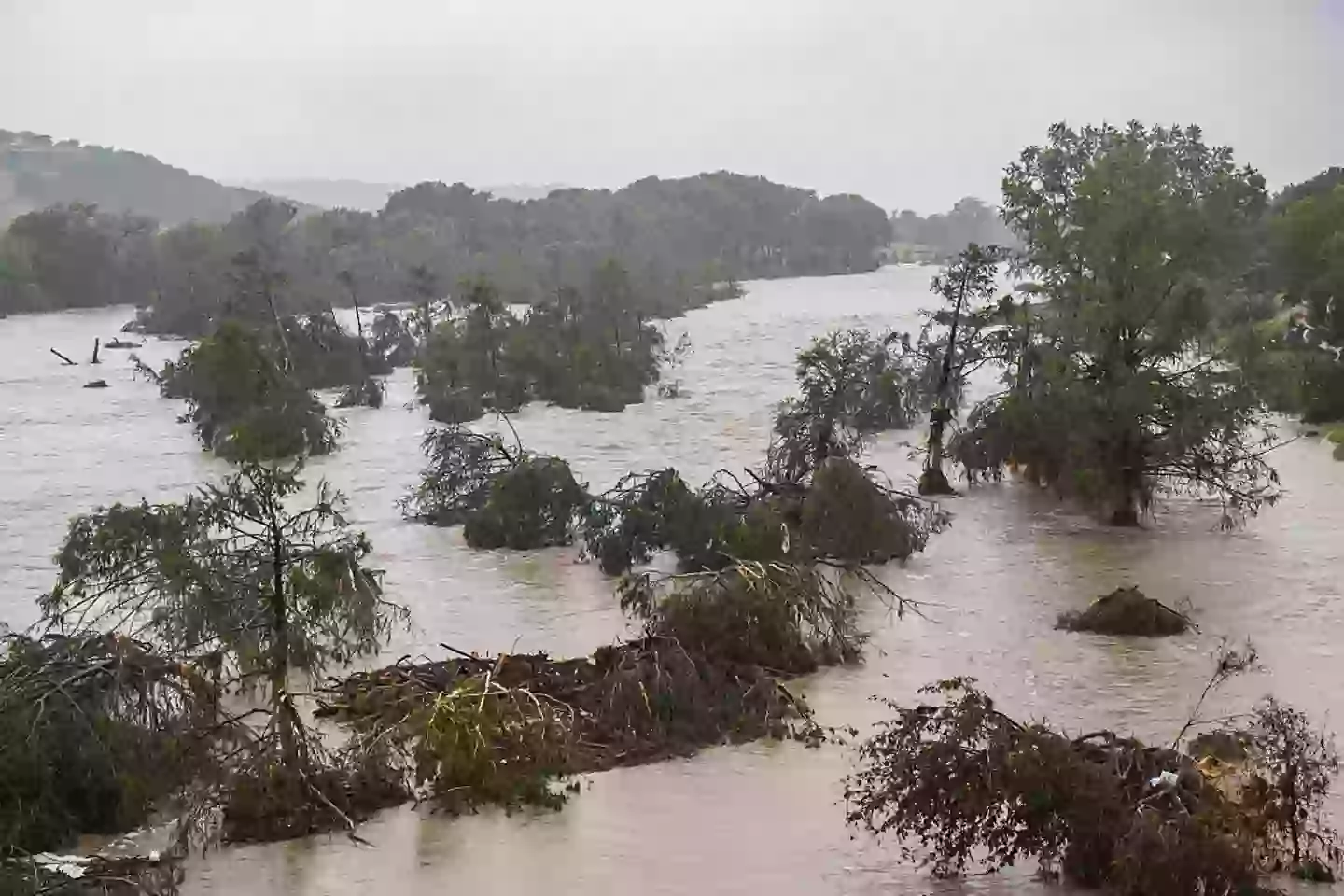Devastating Texas Flash Flood Documented in Time-Lapse Video as Search Operations Continue for Missing Summer Camp Attendees
A catastrophic flash flooding event that struck Kerr County, Texas, during the July 4th holiday weekend has been captured in dramatic time-lapse footage that illustrates the terrifying speed at which natural disasters can unfold. The video documentation provides crucial insight into the rapid development of flood conditions that ultimately claimed at least 51 lives and left numerous children from a local summer camp unaccounted for, prompting one of the largest search and rescue operations in recent Texas history.

The flooding incident, which occurred as communities across America celebrated Independence Day, transformed what should have been a festive holiday weekend into a tragic emergency response situation. The Guadalupe River system, which flows through the Kerrville area, experienced unprecedented water level increases that overwhelmed local infrastructure and caught residents and visitors off guard with their sudden intensity and devastating impact.
The Scope of the Disaster
According to reports from NBC News, the flash flooding has resulted in at least 51 confirmed fatalities, including 15 children, making this one of the deadliest natural disasters to impact Texas in recent years. The human toll of this tragedy extends far beyond the confirmed casualties, as search and rescue teams continue working around the clock to locate missing individuals, particularly focusing on more than 20 children who were attending Camp Mystic, a summer camp facility located outside Kerrville.

Camp Mystic, which was hosting approximately 750 girls at the time of the flooding, found itself directly in the path of the rapidly rising waters. The camp facility has been left without essential services including electrical power, water supply, and communication infrastructure, significantly complicating rescue and recovery efforts. Texas Lieutenant Governor Dan Patrick has emphasized that the missing children are not necessarily “lost” in the traditional sense, but rather may be temporarily out of communication due to the widespread infrastructure damage.
The tragedy has taken on deeply personal dimensions for affected families, with confirmed reports including the death of nine-year-old Janie Hunt, a Camp Mystic attendee whose mother confirmed the devastating loss to CNN. This heartbreaking confirmation represents just one of many family tragedies emerging from this disaster, as parents across the region anxiously await news about their children’s safety and whereabouts.
Time-Lapse Documentation Reveals Rapid Development
The viral time-lapse video posted on social media platforms provides unprecedented documentation of how quickly flash flood conditions can develop, transforming what appears to be a manageable water crossing into a deadly torrent within a matter of minutes. The footage shows individuals walking toward what appears to be a minor depression in the roadway when suddenly, massive volumes of water surge through the area, completely altering the landscape in approximately seven minutes.
This visual documentation serves as a powerful educational tool for understanding the deadly nature of flash flooding events. The video clearly illustrates why even experienced local residents can be caught off guard by such rapid changes in water levels, and why traditional evacuation procedures may be insufficient when dealing with such quickly developing emergency situations.
The dramatic transformation captured in the footage has resonated strongly with viewers across social media platforms, with many expressing shock at the speed of the water’s advance and questioning why more advance warning systems were not in place to alert potential victims to the approaching danger.
Emergency Response and Recovery Efforts
The Kerrville Police Department has coordinated an extensive emergency response operation, with hundreds of first responders deployed from throughout Texas to assist in search and rescue operations. In their official statements, department officials have committed to continuing rescue efforts “until we find all our citizens,” demonstrating the comprehensive nature of the ongoing operation.
The scale of the response reflects both the magnitude of the disaster and the complexity of the search area, which has been significantly altered by the flooding. Emergency responders face numerous challenges including damaged infrastructure, unstable terrain, and the vast geographic area that must be systematically searched to locate missing individuals.
State and federal authorities have mobilized significant resources to support local emergency response efforts. Texas Governor Greg Abbott has signed an extended emergency declaration for the affected areas and has formally requested federal assistance to supplement state and local response capabilities. This multi-level government response underscores the severity of the situation and the recognition that recovery efforts will require sustained, coordinated action across multiple agencies and jurisdictions.
Meteorological Analysis and Contributing Factors
City Manager Dalton Rice has provided technical explanation for the rapid development of flood conditions, describing how the convergence of the north and south forks of the Guadalupe River created perfect conditions for catastrophic flooding. Under normal circumstances, precipitation in the headwater areas would cause manageable water level increases in one fork or the other, with the combined flow passing through Kerrville at manageable levels.
However, the July 4th weather event positioned heavy rainfall directly over both fork systems simultaneously, creating an unprecedented convergence of water volumes. Rice reported that water levels on the south fork increased from approximately seven feet to 29 feet within minutes, demonstrating the explosive nature of the flood development that made evacuation and emergency response extremely challenging.
The meteorological conditions that created this disaster highlight the increasing unpredictability of extreme weather events and the challenges they pose for emergency management systems designed to handle more typical flooding scenarios. The rapid escalation from normal to catastrophic conditions left little time for traditional warning systems to effectively alert potentially affected populations.
Ongoing Weather Concerns and Future Risks
The National Weather Service continues to monitor conditions throughout the Lone Star State, issuing additional flood warnings for areas that may be vulnerable to continued rainfall and elevated water levels. The persistence of unstable weather conditions complicates ongoing search and rescue operations while also raising concerns about additional flooding events that could impact recovery efforts.
Weather forecasters are working to provide accurate predictions about future precipitation patterns, though the same meteorological complexity that contributed to the initial disaster continues to make precise forecasting challenging. Emergency management officials are balancing the need to continue search operations with the requirement to protect rescue personnel from additional weather-related hazards.
Community Impact and Long-Term Recovery
The disaster has fundamentally altered the affected community, with long-term recovery efforts expected to continue for months or years. Beyond the immediate human tragedy, the flooding has caused extensive property damage, infrastructure destruction, and economic disruption that will require comprehensive reconstruction efforts.
Local officials, including Kerr County Judge Rob Kelly, have acknowledged that a disaster of this magnitude was largely unforeseeable despite existing weather monitoring and emergency preparedness systems. This admission highlights the ongoing challenges communities face in preparing for extreme weather events that exceed historical precedents.
Conclusion
The Texas flash flooding disaster represents a sobering reminder of nature’s power and the vulnerability of human communities to rapidly developing natural disasters. The time-lapse documentation provides valuable insight into the speed at which emergency conditions can develop, while the ongoing search and rescue operations demonstrate both the devastating human impact of such events and the remarkable dedication of emergency responders who risk their own safety to help others.
As search operations continue and recovery efforts begin, this tragedy will undoubtedly prompt important discussions about emergency preparedness, warning systems, and community resilience in the face of increasingly unpredictable extreme weather events. The lessons learned from this disaster may prove crucial for protecting other communities from similar tragedies in the future.



